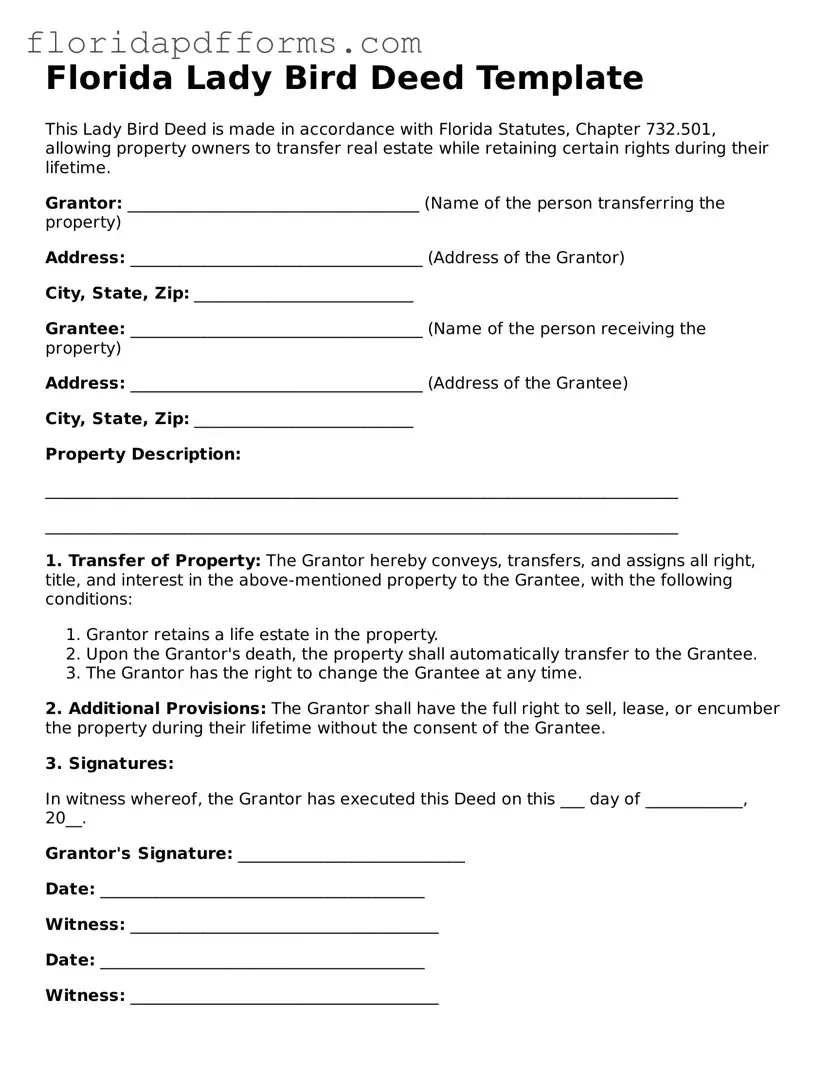Florida Lady Bird Deed Template
This Lady Bird Deed is made in accordance with Florida Statutes, Chapter 732.501, allowing property owners to transfer real estate while retaining certain rights during their lifetime.
Grantor: ____________________________________ (Name of the person transferring the property)
Address: ____________________________________ (Address of the Grantor)
City, State, Zip: ___________________________
Grantee: ____________________________________ (Name of the person receiving the property)
Address: ____________________________________ (Address of the Grantee)
City, State, Zip: ___________________________
Property Description:
______________________________________________________________________________
______________________________________________________________________________
1. Transfer of Property: The Grantor hereby conveys, transfers, and assigns all right, title, and interest in the above-mentioned property to the Grantee, with the following conditions:
- Grantor retains a life estate in the property.
- Upon the Grantor's death, the property shall automatically transfer to the Grantee.
- The Grantor has the right to change the Grantee at any time.
2. Additional Provisions: The Grantor shall have the full right to sell, lease, or encumber the property during their lifetime without the consent of the Grantee.
3. Signatures:
In witness whereof, the Grantor has executed this Deed on this ___ day of ____________, 20__.
Grantor's Signature: ____________________________
Date: ________________________________________
Witness: ______________________________________
Date: ________________________________________
Witness: ______________________________________
Date: ________________________________________
This deed should be recorded in the applicable County Clerk's Office in the state of Florida to be effective.
